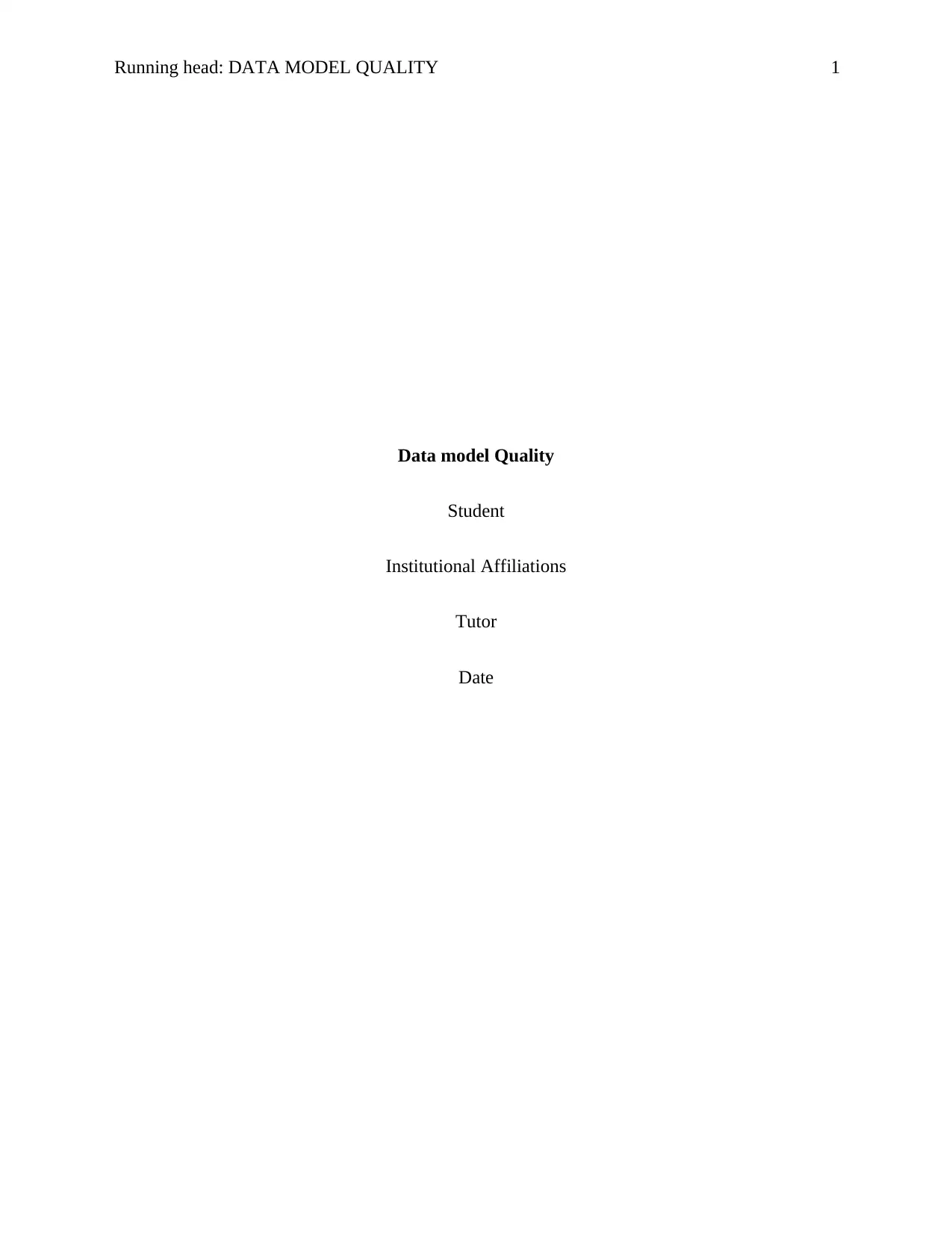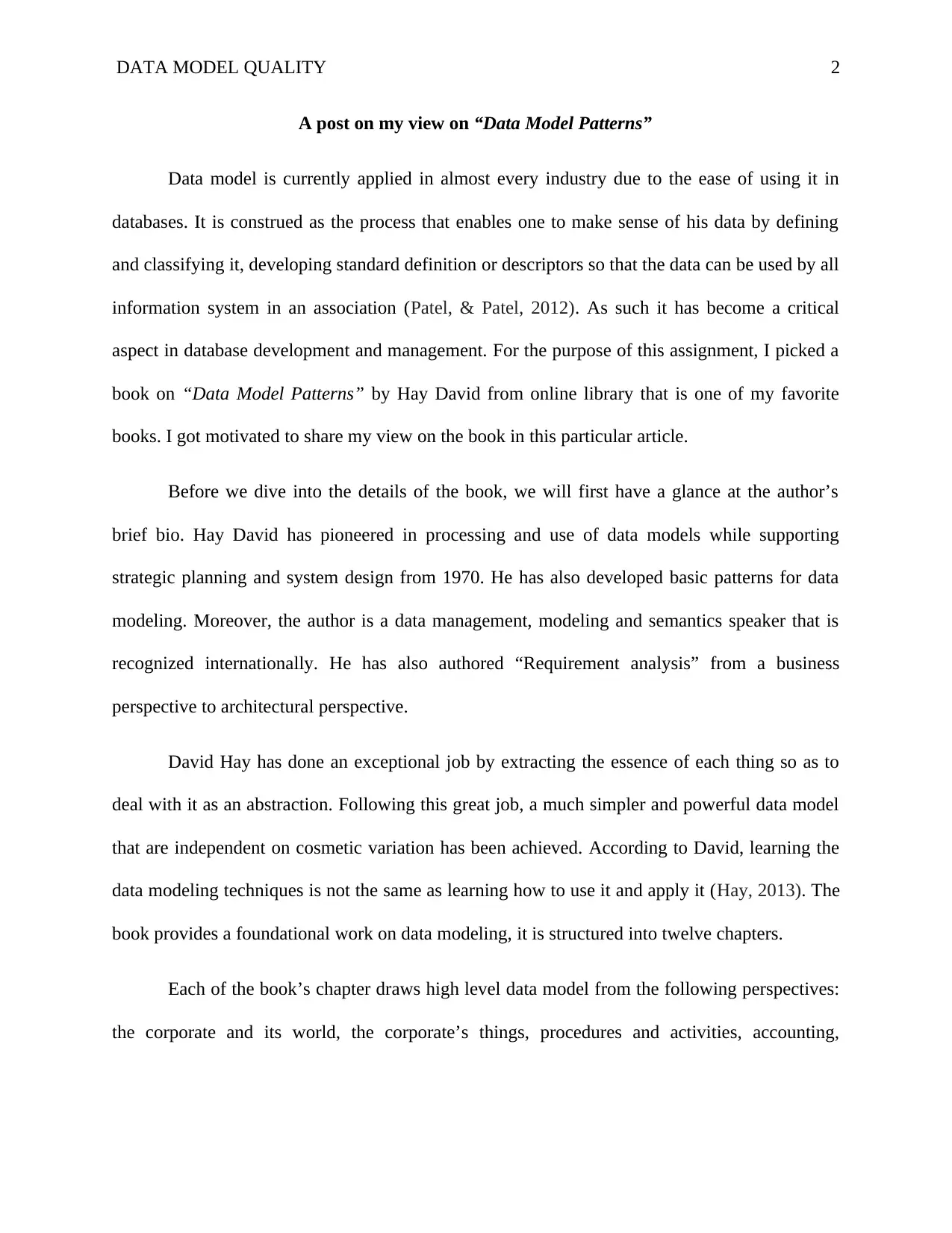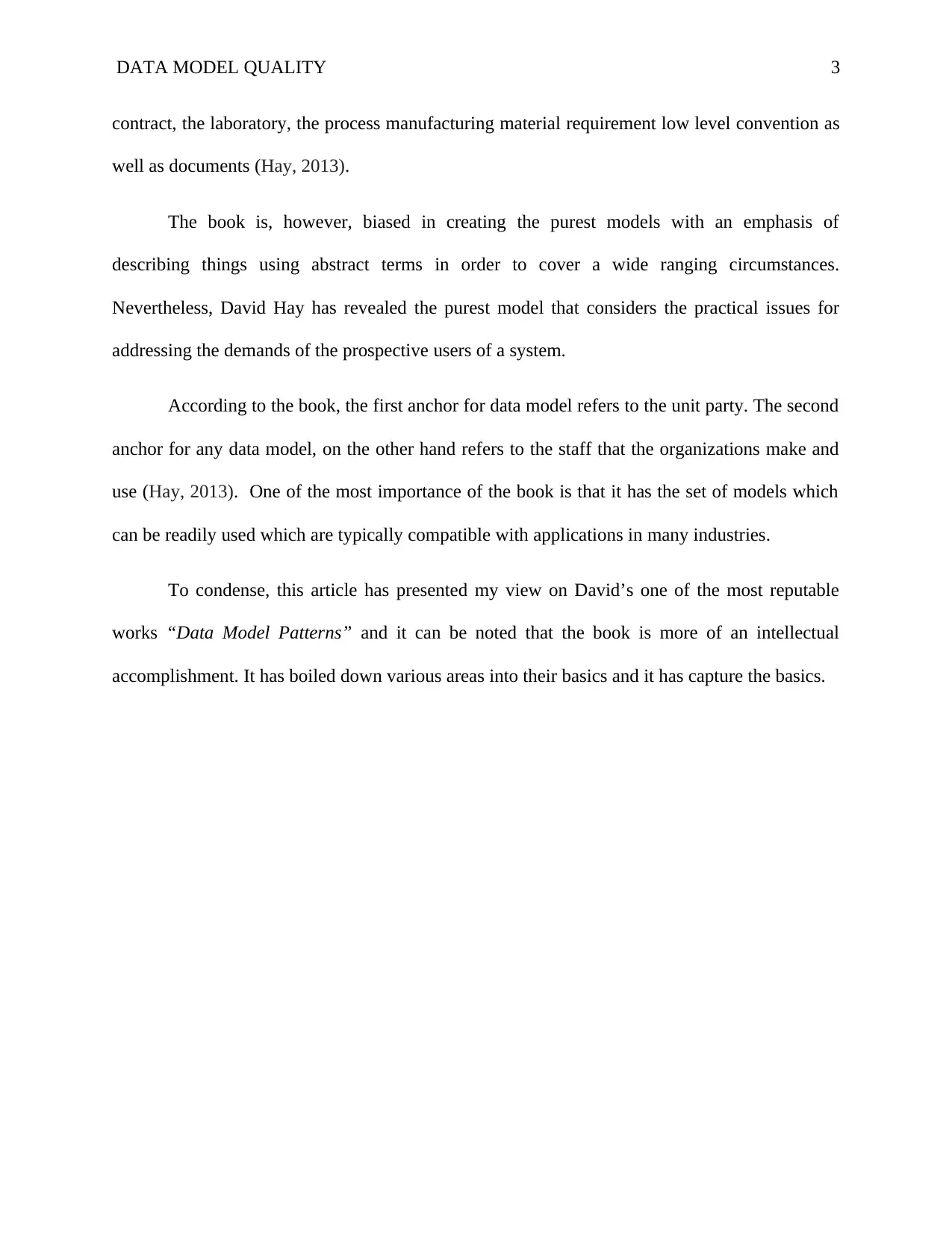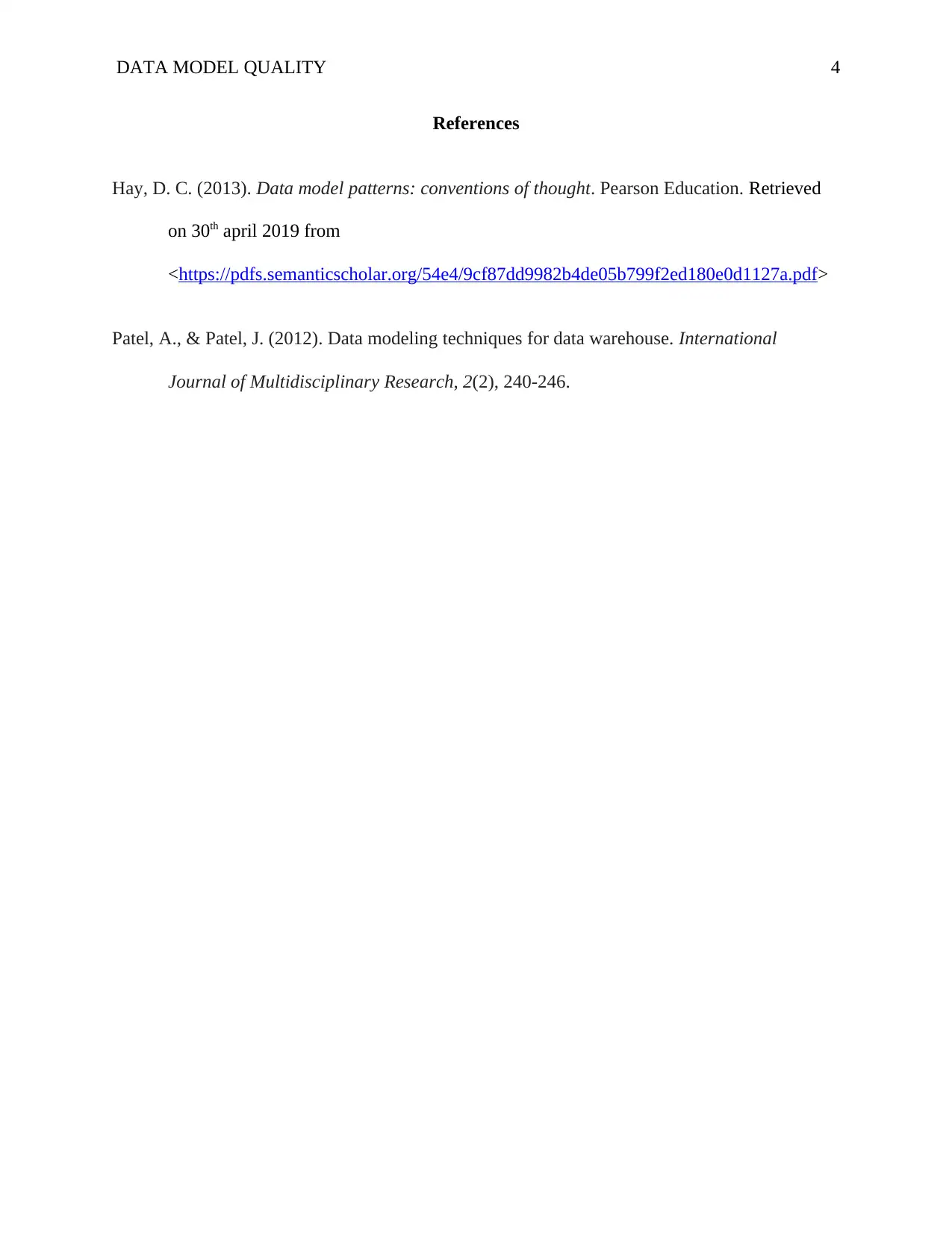A Critical Analysis of Data Model Quality and Associated Patterns
VerifiedAdded on 2022/12/23
|4
|655
|32
Report
AI Summary
This report provides a comprehensive review of data model quality, focusing on the book 'Data Model Patterns' by David Hay. The report begins by defining data modeling and its significance in database development and management. It then delves into Hay's work, discussing his contributions to data modeling, including his development of basic patterns and his emphasis on abstraction. The report highlights the book's structure, which covers various aspects of corporate data, procedures, and activities, and examines its approach to creating pure data models that address practical user demands. The report also touches upon the book's key concepts, such as the unit party and staff as anchors for data models, and its applicability across different industries. Overall, the report emphasizes the intellectual accomplishment of Hay's work in simplifying complex areas and capturing their essence, providing a valuable resource for students interested in data modeling.
1 out of 4







![[object Object]](/_next/static/media/star-bottom.7253800d.svg)